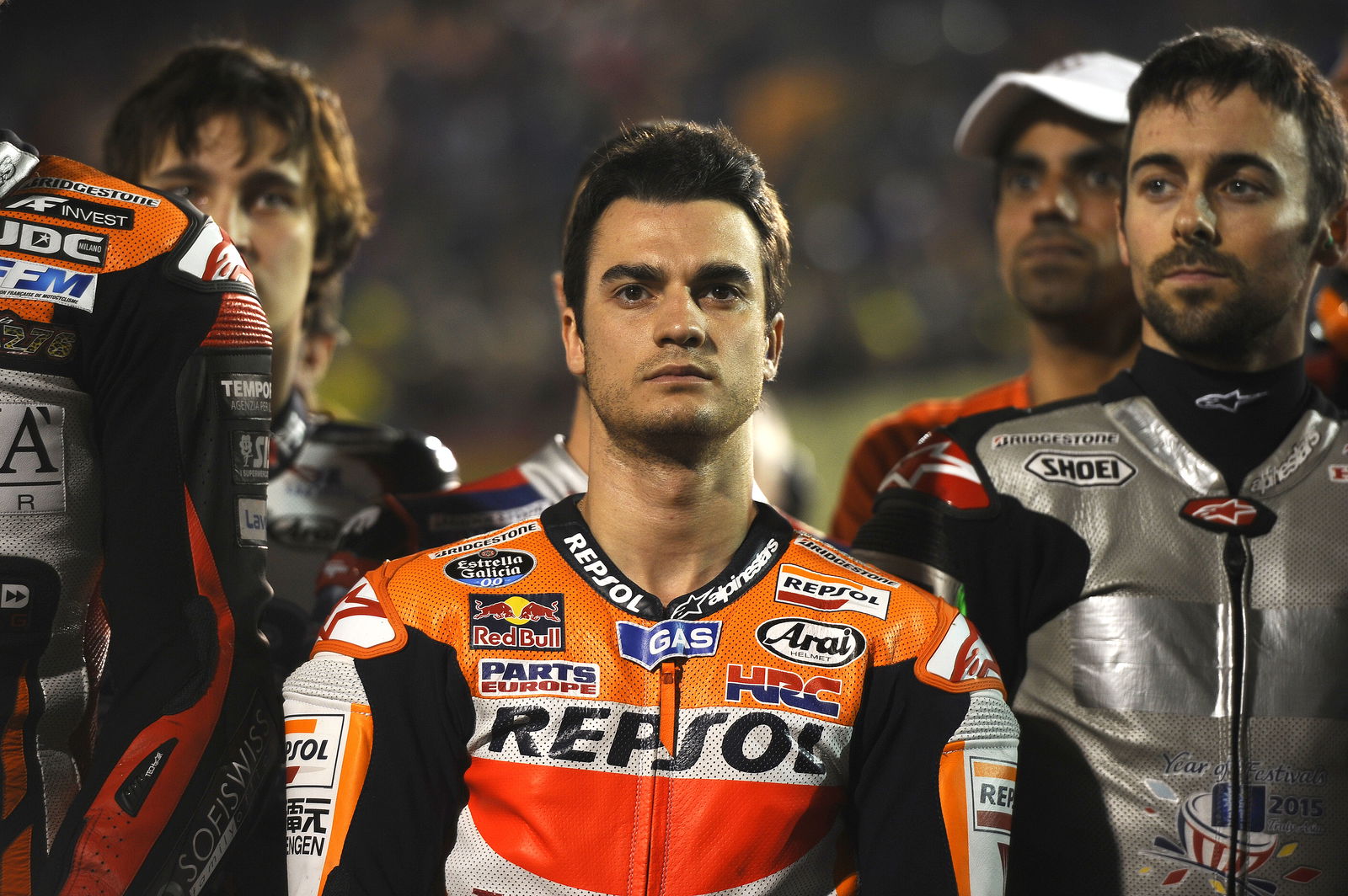'Concessions' continue in MotoGP 2016

A meeting of MotoGP's Grand Prix Commission in Qatar saw further details of the 2016 technical rules decided.
Seven engine changes will be allowed for each rider, (two more than the present Factory rules) plus a minimum machine weight of 157kg (1kg lighter). These add to the previously announced 22-litre race fuel limit, two litres more than the current Factory Honda and Yamaha level.
But most surprising is the amount of technical concessions that could be available to manufacturers without a race win.
While the terms 'Factory' and 'Open' will disappear for the start of the new single ECU era, it was known that some Open-style concessions would continue for less successful manufacturers.
However the Grand Prix Commission statement declared: "All concessions granted to MotoGP class Manufacturers who have not won a race in dry conditions in 2013, 2014 or 2015 will continue to apply".
The details are yet to be revealed, but this season the concessions include greater race fuel (up to 24 litres), a softer rear tyre allocation (despite Michelin replacing Bridgestone in 2016), more engine changes (12 per rider), no engine development freeze and greater testing opportunities.
More concessions will be seen as a major victory for the Dorna side of the negotiations, with the leading manufacturers wanting concessions reduced to only extra engine changes and an exemption from the in-season development freeze.
What's the difference compared with 2015?
Presently the technical benefits are available to Open class competitors ('privateer' riders already using the standard ECU system) plus the non-winning Factory machines: Ducati, Suzuki and Aprilia (using their own ECU software). Honda and Yamaha, which have won every MotoGP race since 2011, receive no technical benefits.
The move to a compulsory single ECU means any 2016 concessions will be granted by manufacturer. All riders with the same brand of bike will have the same technical rules. That means an end to the current situation where, for example, some Honda and Yamaha riders have 24 litres of fuel (Open) and others only 20 litres (Factory).
A new system for reducing but also reinstating the technical advantages has also been drawn up, using the following "Concession Points":
1st place finish = 3 Concession Points
2nd place finish = 2 Concession Points
3rd place finish = 1 Concession Point
"In 2015 a manufacturer achieving three Concession Points in dry races must immediately reduce fuel tank capacity from 24 litres to 22 litres," said the Grand Prix Commission statement. That already fits with Ducati dropping to 22 litres after its double Qatar podium (plus one dry 2014 rostrum), using the previous concession rules.
"(Note: the criteria for losing concessions concerning the use of Open class tyres and testing with contracted riders remains at three race wins in dry conditions).
"In 2016 a manufacturer achieving six Concession Points in dry or wet conditions will immediately lose the right to test with contracted riders and will lose all concessions from the following season.
"However, with effect from the 2016 season, any manufacturer who gains no Concession Points, (effectively meaning no podium places), will benefit from the full package of concessions in the following season."
So what does that mean?
One party involved in the discussions has told Crash.net: "In general the concessions will be easier to get (no podiums in 2016 = full concessions for the next season), but easier to lose."
The GP Commission statement also confirmed that Honda, Yamaha and Ducati will dominate development for the 2016 ECU, which will start in collaboration with Dorna's team of Magneti-Marelli engineers on July 1. Fellow MSMA members Suzuki and Aprilia have far less influence:
"a). The strategies of the 2016 unified software will be based on the present version, (2015 start of season version), of the Open Class software.
"b). Starting from July 1st 2015 and until the end of 2016 season, if a change of the unified software is requested unanimously by Ducati, Honda and Yamaha, then the Organiser must adopt this modification, but the cost is the responsibility of the manufacturers.
"c). Conversely, during the same period as above, if the Organiser wants to make a change to the unified software, this change must be approved unanimously by Ducati, Honda and Yamaha; otherwise the Organiser can't update the software."
Paragraphs b) and c) effectively spell out the process for avoiding deadlock if the (three) manufacturers unanimously disagree with Dorna's technical team on what should be included in the ECU. MotoGP technical director Corrado Cecchinelli previously told Crash.net that the 'final say' was unclear.


